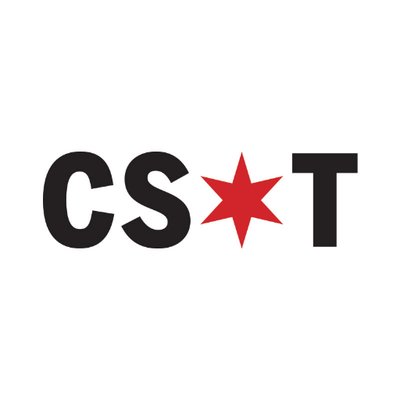



Mammad Mahmoodi of New York City has been front and center of that city’s migrant crisis since 2022, cooking for new arrivals. But a recent Big Apple policy brought the crisis almost to his door.
Mahmoodi was heading into the offices of his nonprofit, EV Loves, in Manhattan, when he came across a line of migrants forming outside a nearby building. He inquired and learned they were migrants traveling alone who had been evicted from shelters after 60 days, the city’s limit for shelter stays.
That limit went into effect in late fall, around the time Chicago was first announcing it would enact its own limits on how long migrants could remain in city-run shelters. A few months later, Mahmoodi and other New Yorkers are warning Chicagoans about the potential impact the policy might have here.
“Be aware that this move is gonna throw away that tiny bit of stability that the families have had since coming here,” Mahmoodi warned in a phone interview from New York. “These are children who started school and are making friends — all those small things are ‘poof’ — out the window.”
“Expect utter chaos,” EV Loves co-founder Sasha Allenby chimed in from the background.

Mammad Mahmoodi (bottom right) is a founder of EV Loves, a New York City-based nonprofit that has taken a leading role in providing meals for asylum-seekers arriving in that city. Lately, they’ve been providing meals for migrants at the city’s “reticketing center,” where migrants evicted from shelters can apply to get into another.
Provided
Mahmoodi’s organization began serving meals to migrants getting off buses early in the crisis, but New York City’s policy shift created a whole new population to feed — migrants who had become obviously homeless.
In New York, as will be the case in Chicago, migrants forced to leave shelters can head to the city’s reticketing center to either apply to return to shelter or get help buying a ticket to leave the city.
“This center is half a block from our center, and suddenly it became the whole center of the operation, without even planning that,” Mahmoodi said, recalling how the line quickly grew from hundreds into the thousands.
In Chicago, that line is expected to form at the state intake center, 800 S. Desplaines St., which is also the city’s designated “landing zone” for migrant arrivals — and where, earlier this month, hundreds were sleeping on buses until the city moved them to Harold Washington Library because of the cold.
Around 14,500 migrants are currently spread throughout Chicago’s 28 shelters. The first shelter evictions had been set to begin Tuesday but have been delayed twice because of the extreme cold. The shelter-stay deadline is now Feb. 1.
Hundreds of migrants are expected to have to leave shelters then.
For their part, New York City officials believe the policy is working as intended, motivating people to find housing independently or find support outside the city.
Around 23,000 migrants have hit the limit of their shelter stay, said a spokeswoman for the office of New York City Mayor Eric Adams, and of those, only a quarter reapplied for shelter.
Many have instead gotten tickets elsewhere — including to Illinois, the top flight destination for migrants leaving New York, according to data shared by Adams’ office.

Asylum-seekers leave a New York City tent city for migrants ahead of a storm in early January. The city’s official migrant tent has become surrounded by informal migrant encampments following the implementation of that city’s shelter limit policy, according to local reports.
Spencer Platt/Getty Images
But many are winding up on the street.
Dave Giffen, the executive director of the New York Coalition for the Homeless, said the city’s policy has clearly caused the local homeless population to grow.
“You can ask anybody walking along the streets of New York and the answer is yes, you’re seeing migrants on the streets living unsheltered,” he said.
New York began enforcing the 60-day stay limit on families last week.
To reapply for shelter, they don’t have to wait in the same line as solo adults, so there hasn’t been a concentration of people in the same way, but many fear the policy will disrupt kids’ education if they are moved to shelters in neighborhoods far from their original schools. The policy could have an impact on both migrant children’s education and that of other young New Yorkers.
“The limits have created havoc for single adults, and we expect it to be even worse for families,” Giffen said.
The New York City public school system, like Chicago’s, doesn’t track how many of the newly arrived migrants’ children have enrolled in schools, but since July 2022, approximately 34,000 students living in temporary housing — which would include many migrant students — have enrolled.

New York City Comptroller Brad Lander speaks at an immigrant rights rally in the Big Apple last spring. Lander recently announced an investigation into New York City’s shelter limit policy.
Michael M. Santiago/Getty Images
That and other questions about the shelter limit policy prompted New York City Comptroller Brad Lander to launch an investigation into the shelter stay limit policy.
“We are concerned about the potentially harmful impacts of the policy on families seeking asylum,” Lander wrote in a letter to City Hall, “and especially on children who may be displaced from their public school by being transferred to a shelter far from their school.”
Thousands of migrant children are already enrolled in Chicago Public Schools, according to an analysis of the growing number of students who are English-language learners.
Michael Loria is a staff reporter for the Chicago Sun-Times via Report for America, a not-for-profit journalism program that aims to bolster the paper’s coverage of communities on the South Side and West Side.
